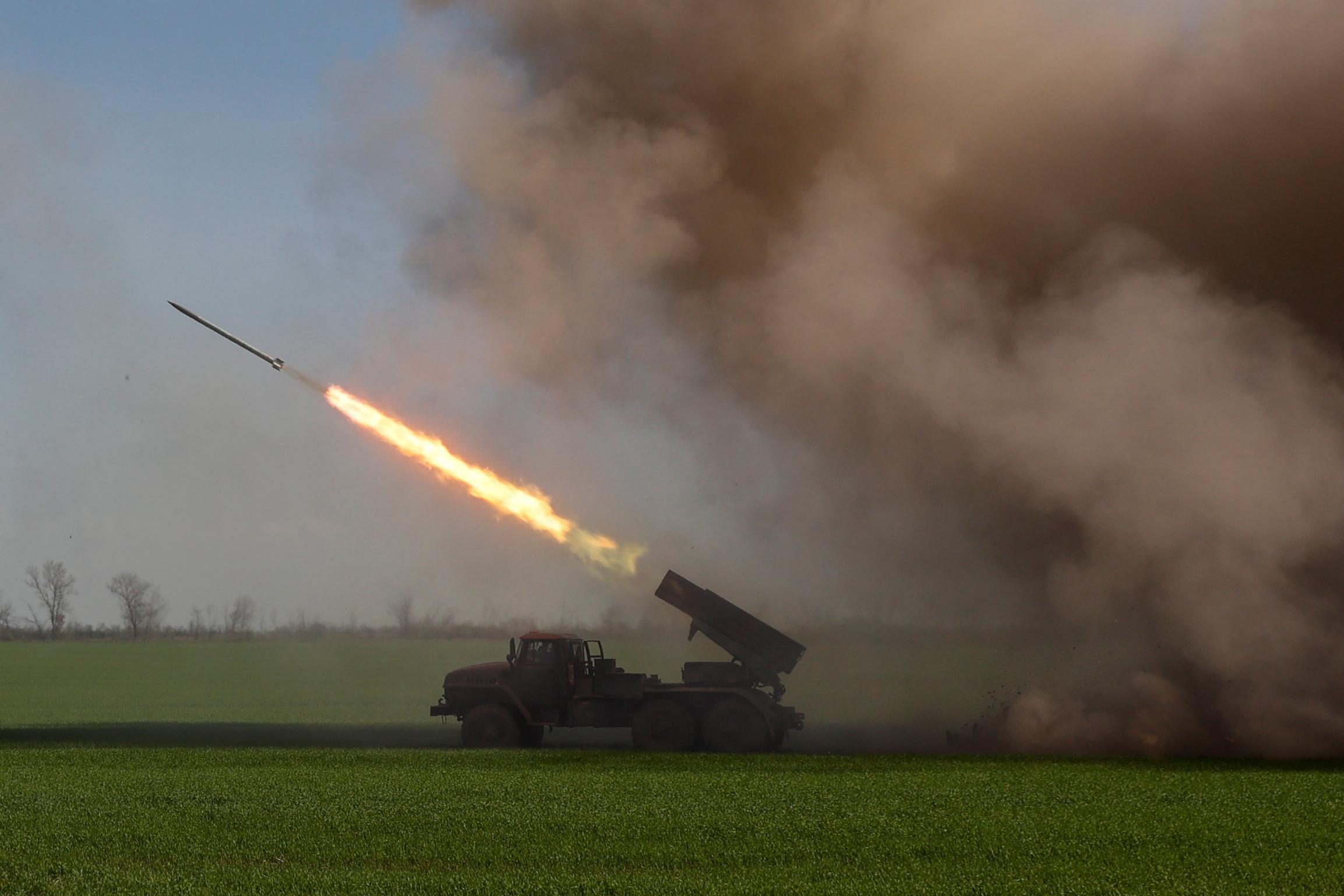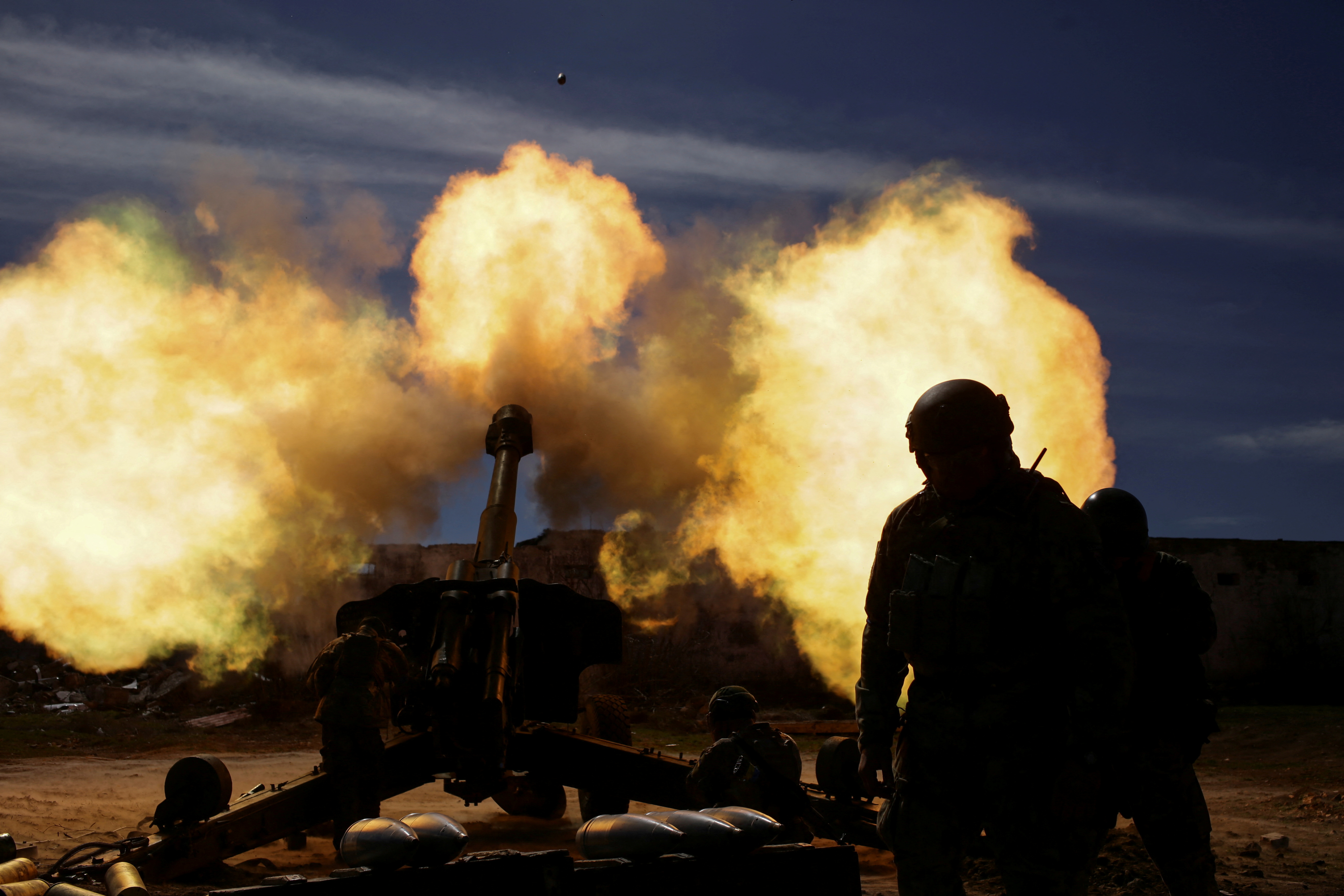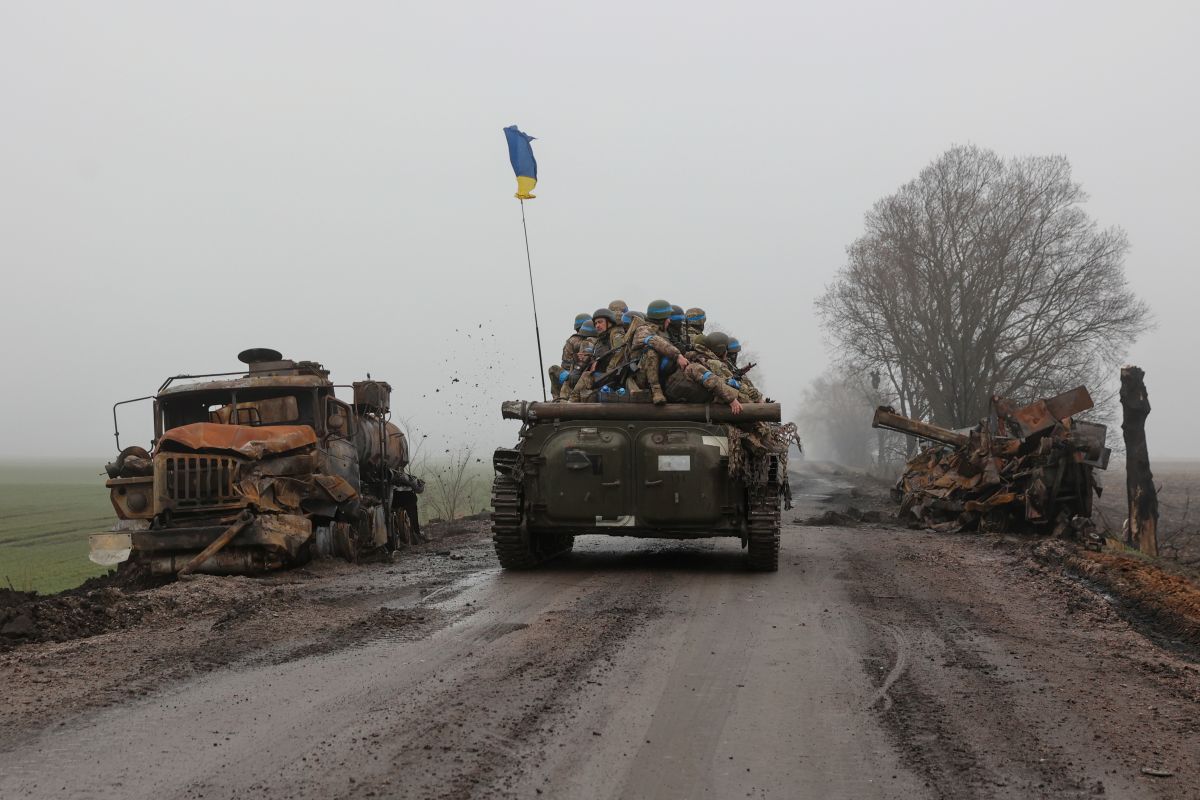The Military Situation in Ukraine after Nine Weeks of Fighting
Despite the formal launch of the second stage of the offensive against Ukraine on 19 April, Russia has failed so far to break through the Ukrainian defences in the east of the country. Intense fighting is taking place there but no significant change in the military situation should be expected in the near future. At the same time, it is increasingly important to supply Ukraine not only with defensive weapons but also other weapon systems such as tanks, artillery, and infantry fighting vehicles to allow it to maintain a defensive position and mount possible counterattacks. At a conference in Rammstein, Germany, on 26 April, Western countries agreed to increase and coordinate such support.
 SERHII NUZHNENKO/ Reuters/ FORUM
SERHII NUZHNENKO/ Reuters/ FORUM
Where are the most intense military operations taking place?
The Russians are mounting offensives towards the cities of Sievierodonetsk and Popasna in the Luhansk Oblast, and Sloviansk, Kurakhove, Avdiivka, and Lyman in Donetsk Oblast. Further attacks are underway in Kharkiv Oblast towards the city of Izium and Kharkiv itself is under fire. Russia also has intensified shelling in the Odesa and Kherson oblasts. In the east of Ukraine, units of the Russian 1st Tank Army and the 20th Combined Arms Army of the Western Military District (MD), as well as the 35th Combined Arms Army and the 68th Army Corps of the Eastern MD are fighting. Russia has intensified its offensive activities in recent days, but these actions still are not sufficient to take full control of the Luhansk and Donetsk oblasts in the near term. Although on 21 April Russian Defence Minister Sergei Shoigu said that Mariupol is under complete Russian control, there is still fighting in the city, mainly in and around the Azovstal steelworks. In Mariupol, the Russians are using conventional non-precision bombs, which leads to civilian losses. Moreover, Russia has started targeting railway and other critical infrastructure, including military facilities, all over Ukraine, to try to block the supply of weapons to Ukrainian units in combat.
What is the situation of the defenders and the military support from Western countries?
According to the General Staff of Ukraine, the forces in Donbas are holding back multiple, significant attacks every day by Russia. In the east and south of Ukraine several brigades, mainly mechanised, armoured, and motorised infantry, are fighting. Ukrainians are using terrain (natural obstacles) to maintain their defences as it increases effectiveness. Intelligence information provided to Ukraine by NATO countries also is playing a very important role.
The Ukrainian side rarely provides information about its own losses but based in part on information about Russian actions, it can be assumed that Ukraine will be forced to replenish personnel in combat areas and that it has significantly exhausted the supplies of equipment it had before the war. Thus, the importance of rapid arms deliveries from Western countries, training of soldiers, and treatment of the wounded is growing.
On 26 April, at the conference at the American airbase at Rammstein, Germany, 40 countries discussed the possibilities of helping Ukraine. After the conference, assurances were given, mainly by NATO countries, but also from Australia, about transfers of advanced weapon systems to Ukraine. Germany pledged to deliver Gepard self-propelled anti-aircraft guns, and the United Kingdom, among others, will give Starstreak MANPADS. Ukraine already has received American 155 mm howitzers and Polish T-72 tanks. Moreover, NATO countries are training Ukrainian operators on use of the supplied weapons systems.
What actions might Russia take next?
In the coming days, Russia is likely to intensify combat operations mainly in eastern Ukraine. An important goal will be to take full control of Mariupol, which means more bombing and shelling of the Azovstal plant. Only after capturing the entire city will Russia be able to transfer some of its units to fight in the Luhansk, Donetsk, or Zaporizhzhia oblasts. For the Russians, it also will be important to strengthen their position in the Mykolaiv, Zaporizhzhia, and Kryvyi Rih directions. They will continue to strengthen their forces operating in the southeast and east of Ukraine. The Ukrainian General Staff indicates that the Russians deployed two battalion tactical groups from the 76th Air Assault Division to Russia’s Belgorod Oblast, bordering Ukraine. Taking into account the increased activity of the Black Sea Fleet, further attacks on the coastal cities, as well as on critical infrastructure located in the west of Ukraine, can be expected. Russian aviation activity also will increase.
What can be expected in the coming days?
Considering the significance of Russia’s 9 May commemorations of Victory Day, an intensification of propaganda directed at Russian society attempting to legitimise the fighting in Ukraine and pointing to “criminal plans” of the Ukrainian side and supported by NATO countries, should be expected. Subversive activities by Russian services inside Russia, such as arson or bombings, cannot be ruled out, regardless of the activities carried out by the Ukrainian side in the Russian regions bordering Ukraine. In each case, the Russian will accuse Ukrainian saboteurs to increase hatred of Ukrainians.
Further provocations in Transnistria similar to the blowing up of two radio towers on 26 April, may also take place. Considering that Russia will not be able to launch an offensive against Ukraine from the breakaway region of Moldova without additional support for its armed forces stationed in the region, these provocations are aimed at influencing the “separatist” authorities of Transnistria. Russia wants them to withdraw their previous declarations of neutrality towards the war in Ukraine and aims for a psychological effect from the supposed sabotage by showing Ukraine as an aggressive state that conducts subversive activities even in countries other than Russia.





